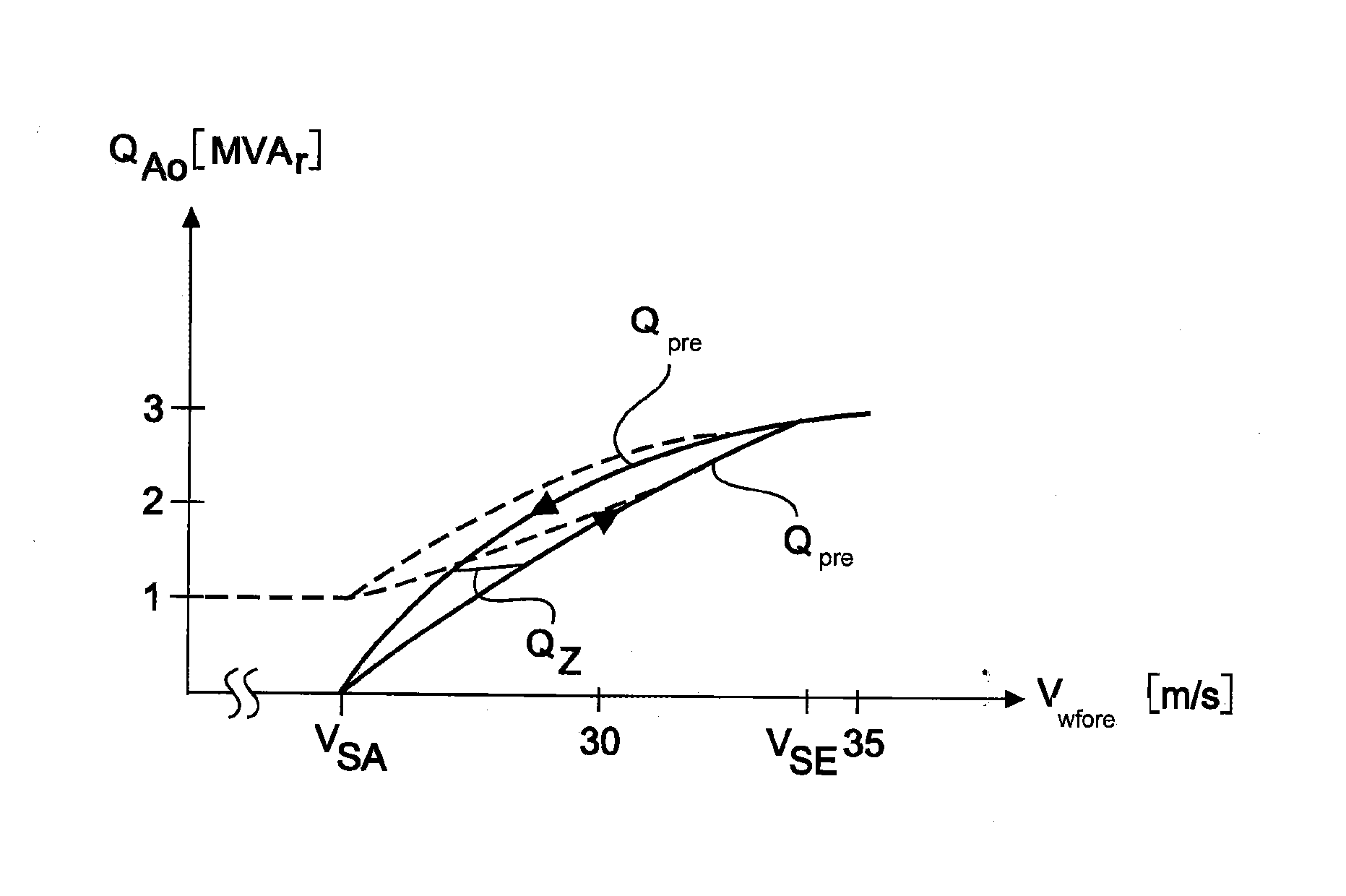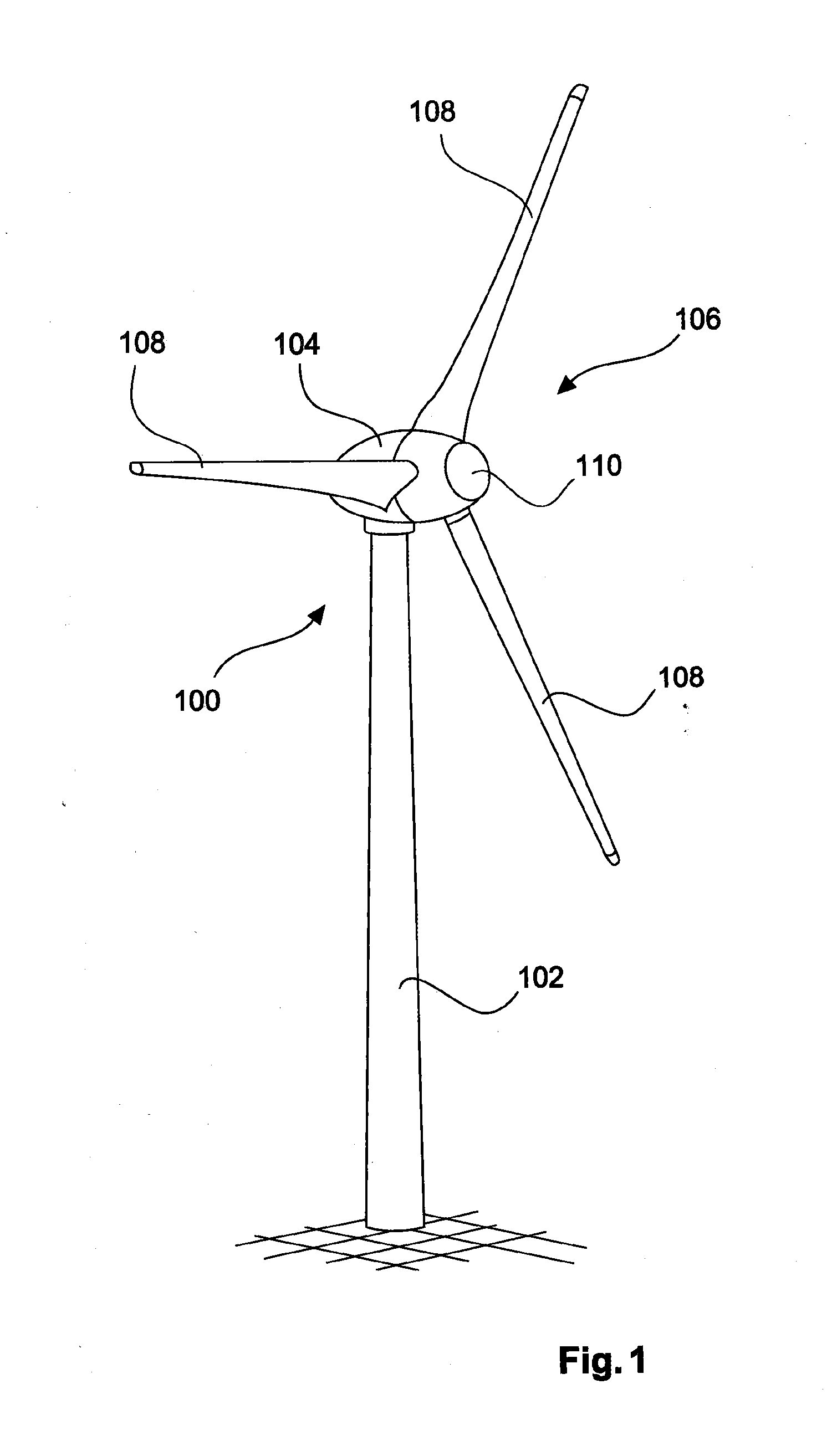Method for controlling wind turbines
a technology of wind turbines and wind power generators, applied in the direction of electric generator control, machines/engines, mechanical equipment, etc., can solve the problems of not necessarily definite correlations, not at all, etc., and achieve the effect of increasing capacity and adding to the grid's stability
- Summary
- Abstract
- Description
- Claims
- Application Information
AI Technical Summary
Benefits of technology
Problems solved by technology
Method used
Image
Examples
Embodiment Construction
[0034]FIG. 1 shows a wind turbine 100 with a tower 102 and nacelle 104. A rotor 106 with three rotor blades 108 and a spinner 110 is located on the nacelle 104. When in operation, the rotor 106 is brought to a rotating movement by the wind and thereby drives a generator in the nacelle 104.
[0035]FIG. 2 shows a wind farm 112 with, for example, three wind turbines 100, which may be the same or different. The three wind turbines 100 are thus representative of a basically random number of wind turbines of a wind farm 112. The wind turbines 100 provide their power, in particular the generated electricity, via an electrical wind farm grid 114. The currents or powers, respectively, generated by the individual wind turbines 100 are added up. Most often, a transformer 116 will be provided, which transports the voltage at the wind farm to then feed it into the supply grid 120 at the feeding point 118, which is also generally referred to as a PCC. FIG. 2 is merely a simplified illustration of a...
PUM
 Login to View More
Login to View More Abstract
Description
Claims
Application Information
 Login to View More
Login to View More - R&D
- Intellectual Property
- Life Sciences
- Materials
- Tech Scout
- Unparalleled Data Quality
- Higher Quality Content
- 60% Fewer Hallucinations
Browse by: Latest US Patents, China's latest patents, Technical Efficacy Thesaurus, Application Domain, Technology Topic, Popular Technical Reports.
© 2025 PatSnap. All rights reserved.Legal|Privacy policy|Modern Slavery Act Transparency Statement|Sitemap|About US| Contact US: help@patsnap.com



